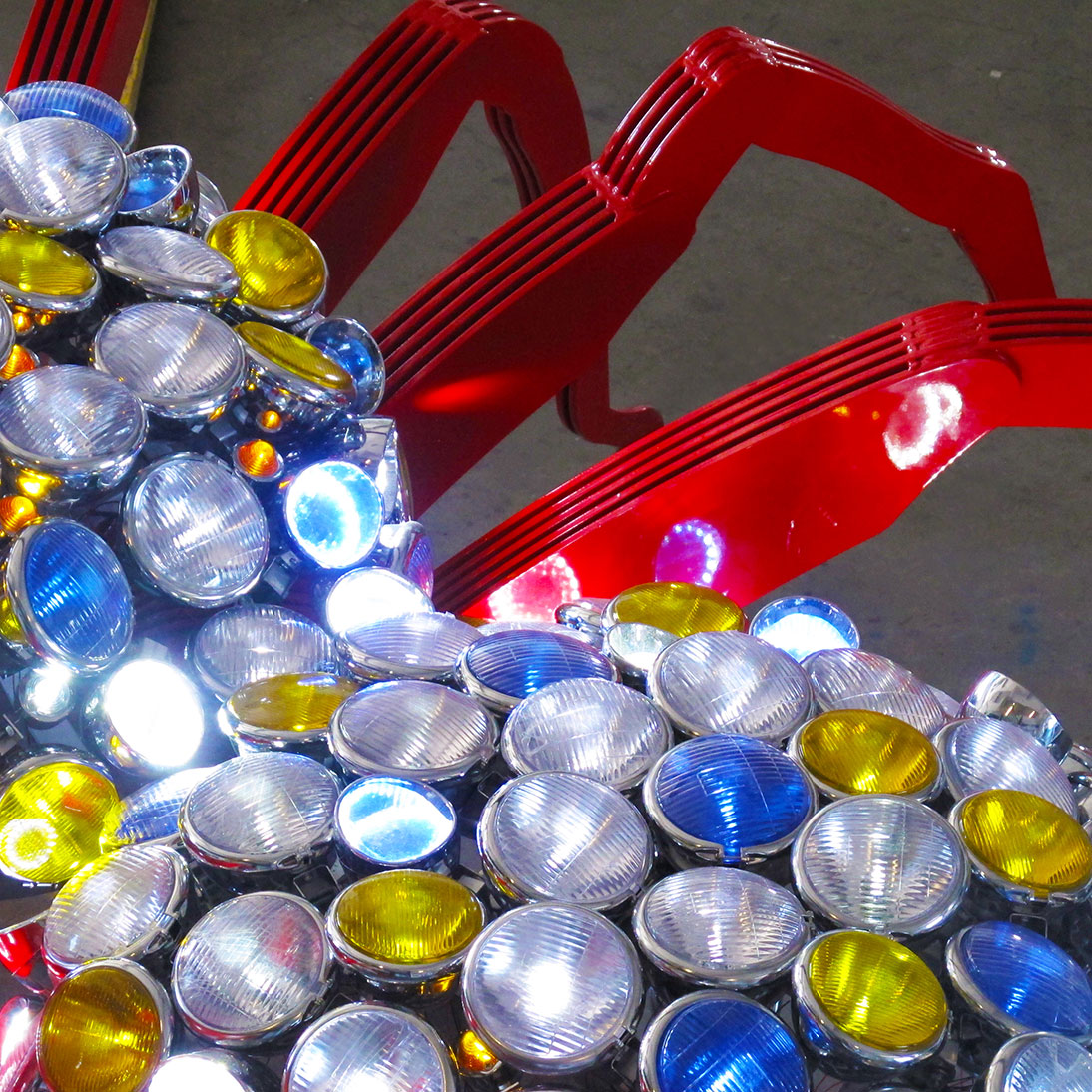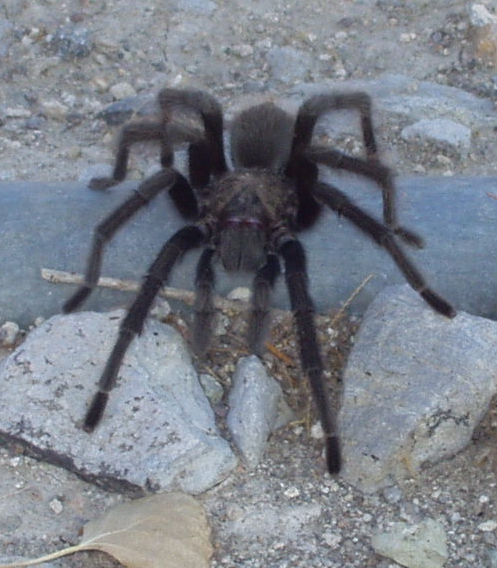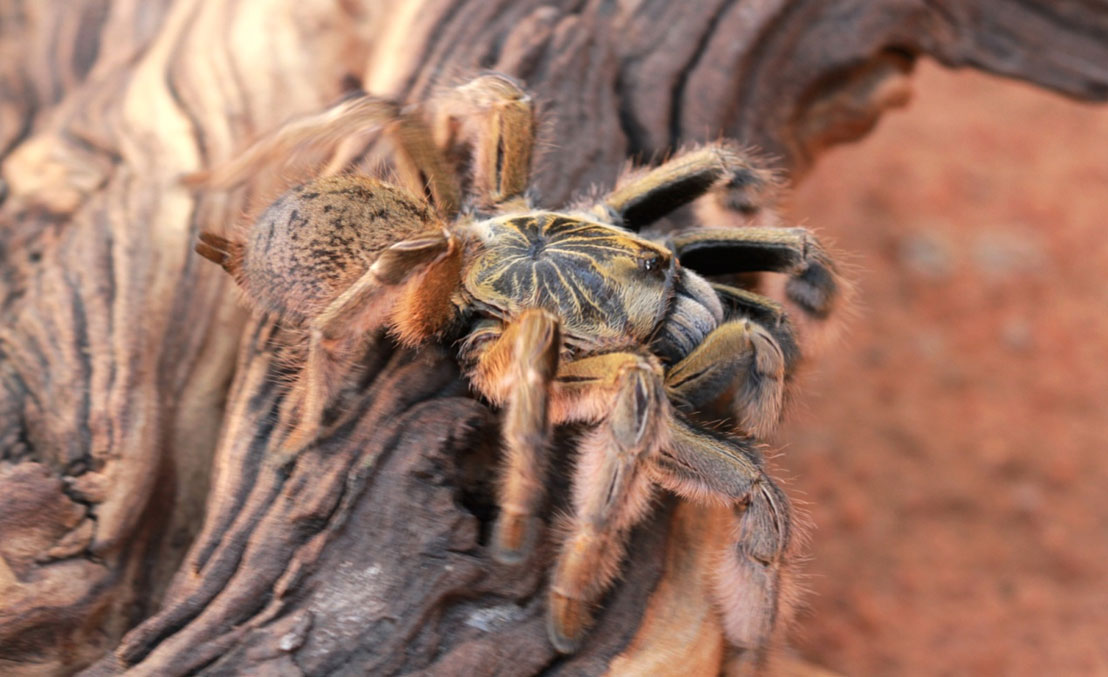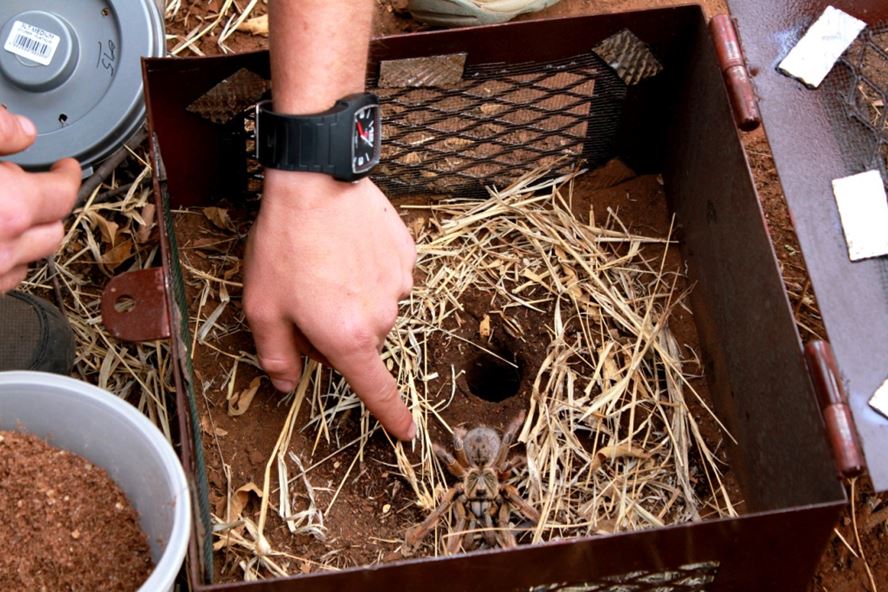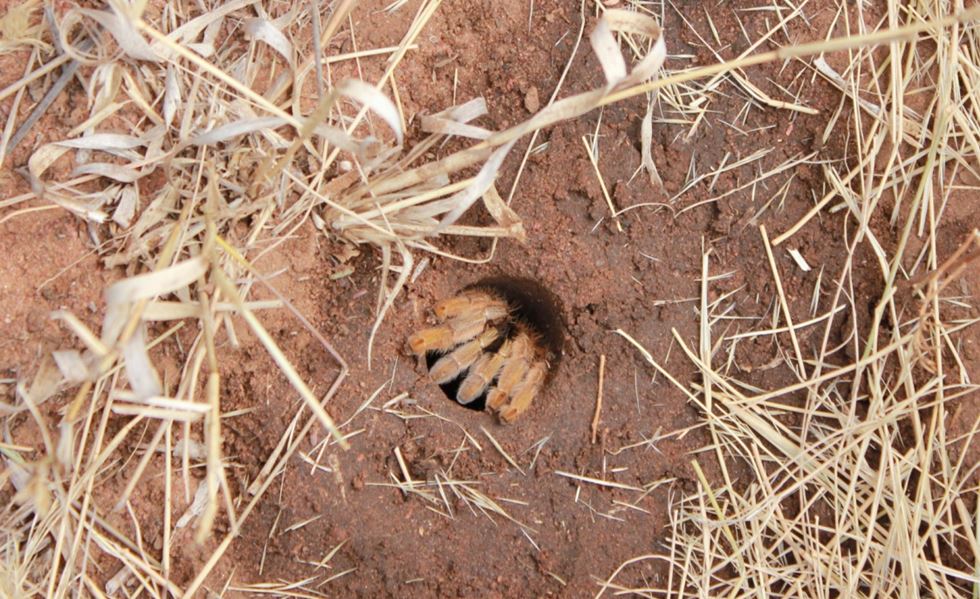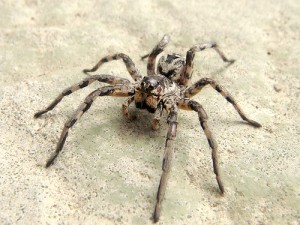Oh what a lovely web we weave . . .
I finally got a look, a proper nighttime look, at the marvelous tarantula sculpture mounted to the wall of a parking garage in Morgan Hill, California. Here it is!

That’s Venus shining down, by the way. Tell me this ain’t a sight you’d drive all the way to Morgan Hill to see. [Photos by Charles Lindsey]
Recall how the art-loving (and publicity-friendly) civic leaders of this horsy Bay Area town withstood the faint cries of arachnophobes and naysayers and commissioned this sculpture to beautify the garage, which, like all parking garages, could be made more beautiful by practically anything. But in this case, the artwork is a stunner.
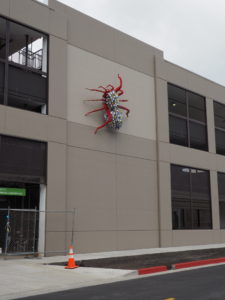
You won’t forget where you left your car. (Insert joke about Fiat Spider here.)
The glittering tarantula, by sculptor Gordon Huether, is a tribute to the native tarantulas that prowl the foothills in search of mates. It gleams with the beams of multiple car headlights—I bet you never thought of building a giant spider out of old car parts, did you?—and gives Morgan Hill’s modest downtown a shot of color and charisma.
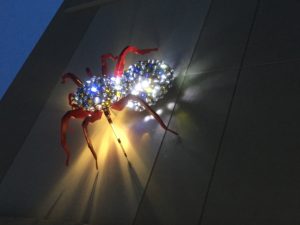
That glitter rocker who was talking about spiders from Mars? They probably looked like this.
.
But the surprising thing to me is how spidery it is. The proportions, the graceful bend of a knee, the sense of aloof purpose—all those really do evoke the tarantulas that stride around in the fall. People caricature spiders with the dripping fangs, and the red eyes, and all the other grotesque nonsense, or they draw ticklike silhouettes like the Richmond Spiders mascot and it’s obvious they have no idea what spiders even look like. Is it any wonder they think spiders are invading beds, and biting British tots, and leaping around, and infiltrating beehive hairdos? Not surprising at all.

Still handsome by day. Just not as electric.
But Huether got it so right. His spider is built on a structure of red metal beams, and like other skilled sculptors he turned that rigid material into a shape suggestive of both grace and heft, like a tarantula itself. Those strong femurs, narrowing down to the delicate tarsi and toes; the front legs raised slightly as the nearsighted animal investigates its path; even the multiple little orbs across its back, reminiscent of a mama wolf spider carrying its babies around. It all evokes not only movement but natural movement.
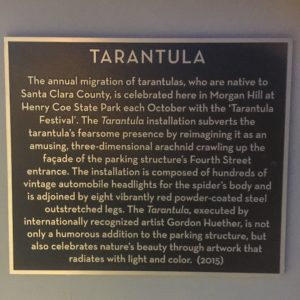 .
.
A spider of that size really would walk, and climb, and pause that way. Here, of course, I need to acknowledge the law of scaling that insists a living spider that big is impossible, at least on our planet. It wouldn’t be able to take in enough oxygen or support its weight, although I bet some cool steel prosthetic legs would help.
Also: laser eyes, as long as we’re blue-skying physiological improvements.
As for the sculpture, I don’t see any room for improvement. It’s perfect. Long may it glow.


